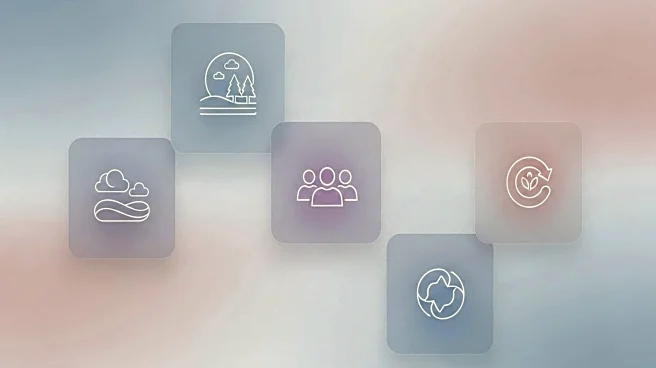What's Happening?
YouTube has launched a new mental health section specifically designed for teenage viewers. This initiative includes special video 'shelves' that provide adolescents with age-appropriate information on mental health topics
such as depression, anxiety, ADHD, and eating disorders. The platform, which is the most-used social media site among teenagers, aims to offer resources from reputable organizations like The Jed Foundation, the National Alliance for Eating Disorders, and the Child Mind Institute. These resources are part of a broader policy shift by YouTube to enhance its support for mental health, including new community guidelines that restrict content promoting eating disorders.
Why It's Important?
The introduction of a dedicated mental health section on YouTube is significant as it addresses the growing need for accessible mental health resources among teenagers. With nine out of ten teens regularly using YouTube, this platform can play a crucial role in connecting young users with reliable information and support. By partnering with mental health nonprofits and government organizations, YouTube is taking steps to ensure that the content is evidence-based and engaging, potentially reducing the stigma around mental health issues and encouraging teens to seek help.
What's Next?
The rollout of the teenage mental health resources will begin over the coming weeks, initially targeting users in the United States, United Kingdom, Canada, Mexico, France, and Australia. As the program expands, it may lead to further collaborations with mental health organizations and the development of additional resources tailored to the needs of teenagers. Stakeholders such as mental health professionals and educators may respond positively to this initiative, potentially advocating for similar efforts across other social media platforms.
Beyond the Headlines
This development highlights the ethical responsibility of social media platforms to safeguard the mental health of their users, particularly vulnerable groups like teenagers. It also underscores the importance of creating digital spaces that prioritize user well-being and foster a supportive community. Long-term, this initiative could influence how other platforms approach mental health, leading to broader industry standards and practices.











